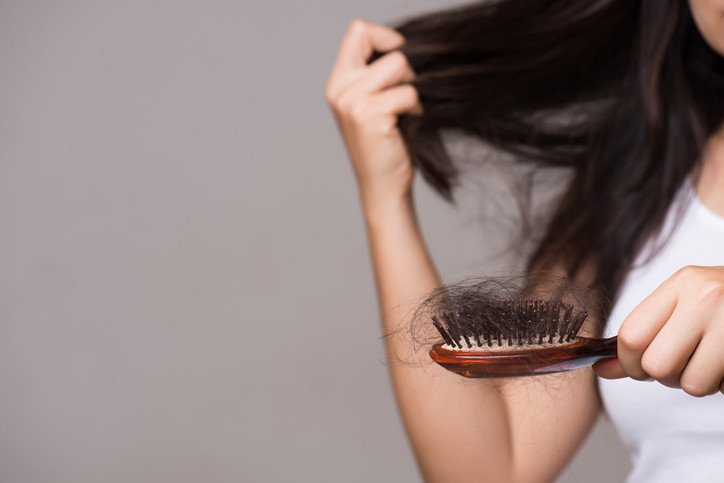Understanding Hair Loss: Causes, Prevention, and Treatment Options

Hair loss is a common concern affecting millions of people worldwide, regardless of age or gender. It can be distressing and impact self-esteem, but understanding its causes and exploring available treatments can help you manage or even reverse the condition. In this comprehensive guide, we’ll delve into the various causes of hair loss, preventive measures you can take, and the most effective treatment options available today.
Causes of Hair Loss
Hair loss can result from a variety of factors, ranging from genetics to lifestyle choices. Here’s a closer look at some common causes:
1. Genetic Factors (Androgenetic Alopecia)
Overview: Often referred to as male or female pattern baldness, this hereditary condition is the most common cause of hair loss. It’s characterized by a gradual thinning of hair, starting at the hairline or crown.
Symptoms: Thinning at the crown, receding hairline, or overall hair thinning.
Genetics: Passed down through families, it involves a sensitivity to dihydrotestosterone (DHT), a derivative of testosterone.
2. Hormonal Changes
Overview: Hormonal imbalances can trigger hair loss in both men and women. Conditions such as pregnancy, menopause, and thyroid disorders can affect hair growth.
Symptoms: Diffuse thinning of hair, noticeable hair shedding during hormonal changes.
Hormones: Estrogen, progesterone, and thyroid hormones play significant roles in hair health.
3. Medical Conditions
Overview: Several medical conditions can lead to hair loss, including autoimmune diseases like alopecia areata, where the immune system attacks hair follicles.
Symptoms: Patchy hair loss, sudden shedding.
Conditions: Autoimmune disorders, lupus, and scalp infections.
4. Nutritional Deficiencies
Overview: Poor nutrition can lead to hair loss as the body requires specific nutrients to maintain healthy hair growth.
Symptoms: Dry, brittle hair, and noticeable hair loss.
Deficiencies: Iron, zinc, vitamin D, and B vitamins are critical for hair health.
5. Stress and Trauma
Overview: Physical or emotional stress can cause temporary hair loss, known as telogen effluvium.
Symptoms: Sudden shedding of hair, often occurring a few months after a stressful event.
Stress: Includes major life changes, trauma, or illness.
6. Hair Care Practices
Overview: Harsh hair treatments and poor hair care practices can lead to damage and hair loss.
Symptoms: Breakage, split ends, and thinning hair.
Practices: Excessive heat styling, tight hairstyles, and chemical treatments.
Prevention of Hair Loss
While some causes of hair loss are unavoidable, there are proactive steps you can take to prevent or minimize hair loss:
1. Maintain a Balanced Diet
Overview: Eating a diet rich in essential nutrients supports overall hair health.
Key Nutrients: Include protein, iron, omega-3 fatty acids, vitamins A, C, D, E, and B-complex vitamins.
Sources: Lean meats, fish, leafy greens, nuts, and seeds.
2. Practice Good Hair Care
Overview: Gentle hair care routines can prevent unnecessary damage.
Tips: Use a wide-tooth comb, avoid harsh shampoos, and reduce heat styling. Opt for natural, sulfate-free shampoos and conditioners.
3. Manage Stress
Overview: Implement stress management techniques to reduce the risk of stress-induced hair loss.
Methods: Exercise, meditation, and adequate sleep can help manage stress levels.
4. Avoid Excessive Chemical Treatments
Overview: Limit the use of chemical treatments like coloring, perming, and relaxing.
Advice: If you do use these treatments, ensure they are performed by a professional and give your hair time to recover between treatments.
5. Regular Scalp Care
Overview: Keeping your scalp healthy supports optimal hair growth.
Routine: Regularly massage your scalp to increase blood flow, and keep your scalp clean and free of excess oil and buildup.
Treatment Options for Hair Loss
If you’re experiencing hair loss, various treatment options are available, depending on the underlying cause:
1. Over-the-Counter Products
Minoxidil: An FDA-approved topical treatment available without a prescription. It helps stimulate hair growth and is used for androgenetic alopecia and other types of hair loss.
Finasteride: An oral medication for men that reduces DHT levels, slowing hair loss and promoting regrowth. Available by prescription only.
2. Prescription Medications
Corticosteroids: Used for autoimmune-related hair loss, these can be applied topically, injected, or taken orally to reduce inflammation and suppress the immune response.
Spironolactone: Often prescribed to women with hormonal-related hair loss, it acts as an anti-androgen.
3. Hair Restoration Procedures
Hair Transplant Surgery: Involves moving hair follicles from one part of the scalp to thinning or balding areas. This is a permanent solution but requires careful consideration and professional consultation.
Platelet-Rich Plasma (PRP) Therapy: Involves injecting a concentration of platelets from your blood into the scalp to stimulate hair growth.
4. Natural and Alternative Treatments
Essential Oils: Oils like rosemary, peppermint, and lavender are believed to improve circulation and promote hair growth.
Herbal Remedies: Saw palmetto and ginseng are commonly used to support hair health, though evidence varies.
Conclusion
Hair loss can be a challenging experience, but understanding its causes and exploring treatment options can help you manage the condition effectively. Whether you’re dealing with genetic factors, hormonal changes, or stress, there are numerous strategies to address and potentially reverse hair loss. Maintaining a healthy lifestyle, practicing good hair care, and seeking appropriate medical treatments can all contribute to healthier, fuller hair.
If you’re struggling with hair loss, consider consulting a healthcare professional or dermatologist to determine the best course of action tailored to your specific needs. Have questions or personal experiences with hair loss? Share them in the comments below—we’d love to hear from you!
